terrestrial & wetland management
terrestrial & wetland management
A-TIP Control offers a wide variety of wetland and terrestrial plant management services. From brush and plant clearing to full scale management of wetland mitigation sites, our experienced team can handle it all.
Terrestrial Weeds and Invasive Plants
Phragmites
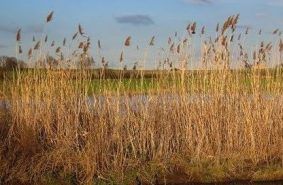
Phragmites is a widespread and highly aggressive invasive species. It has spread nearly globally in freshwater wetlands and found throughout the entire continental United States. It can quickly colonize roadside ditches and sites with disturbed soil and more slowly invades the native wetlands with moist soil and shallow water.
Japanese Knotweed
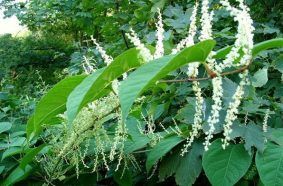
Japanese Knotweed is an invasive species that was introduced to the US from Asia. It is an extremely tolerant species, which thrives in full shade, high temperatures, high salinity, and drought. It is found near water sources such as along streams and rivers, in low-lying areas, waste places, and utility right-of-ways. It can quickly become an invasive pest in natural areas after spreading from cultivated gardens. It forms thick, dense colonies that completely crowd out any other herbaceous species and is now considered one of the worst invasive exotic plants in the US.
Purple Loosestrife
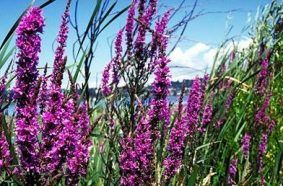
Purple Loosestrife is a very hardy perennial plant which can rapidly infest and degrade once healthy wetlands; diminishing their value as wildlife habitat. Wetlands are the most biologically diverse, productive component of our ecosystem. Hundreds of species of plants, birds, mammals, reptiles, insects, fish, and amphibians rely on wetland habitat for their survival.
Reed Canary Grass
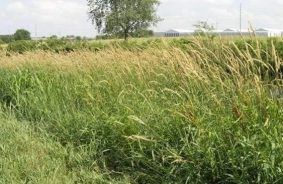
Reed Canary Grass is a thick, perennial grass that can grow up to six feet high. It is a major threat to natural wetlands, as it can easily outcompete most native species. Disturbed areas and roadside ditches are also at risk for infestation. If left untreated, the dense stands of this grass can completely take over an area, eliminating all other species and forming a large monoculture.
Swallow-Wort
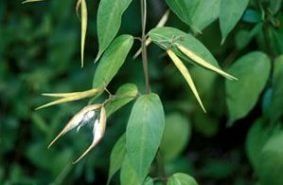
There are two varieties of invasive Swallow-Wort that are becoming large issues in the US; Black and Pale Swallow-Wort. Swallow-Wort is an aggressive vine that was brought to the US as an ornamental plant. It is nicknames the “dog-strangling vine” due to its ability to choose out desirable species. They can occur in a variety of habitats; from open fields to shaded woods, in either moist or dry soil.
Cattails
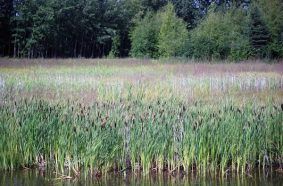
Cattails have the ability to spread along the edge of a body of water, making entrance to the water difficult or impossible. They grow in thick stands, impeding both view of and access to the water body. Cattails are one of the most common nuisance plants we deal with. Please see our Cattail Management page to view the best options for dealing with cattails.
Buckthorn
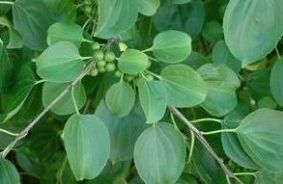
Buckthorn is a shrub introduced to the US from Europe in the mid-1800s, and was a very popular material for use in hedge rows. Without any natural diseases or pests to control its growth in the states, it spread quickly. It outcompetes native plants, forming impenetrable layers of vegetation. It blocks sunlight from reaching the forest floor, inhibiting the growth of any new plants. It has little value as food or shelter for wildlife or birds.
Multiflora Rose

Multiflora Rose is an invasive shrub growing through most of the eastern United States that sometimes also grows in a vine. It’s a thorny plant that outcompetes native vegetation and can easily overtake an area. A single multi-flora rose bush can produce over a million seeds in a single season, which are dispersed easily by birds.
Honeysuckle
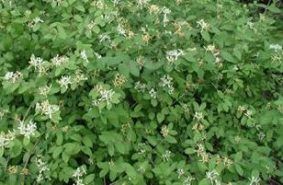
There are several species of invasive Honeysuckle bushes that you may find in New York; Amur, Japanese, and Morrow’s Honeysuckle. The best way to distinguish a native honeysuckle from an invasive honeysuckle is to break open the stem. Native plants will have solid stems, while invasive will be hollow. All three of the invasive varieties have the ability to outcompete native plants and form dense stands. They are also able to grow in many different types of areas.
Management Techniques
We utilize several different methods for removal of terrestrial or wetland plants and can combine different methods for a complete removal and restoration package.
Herbicide Spraying
Herbicide spraying can be performed from a utility vehicle mounted sprayer on larger sites, or with a backpack sprayer for smaller areas, or areas with sensitive vegetation mixed in.
Mechanical Removal
Vegetation can be cut and physically removed from the site, typically done after an herbicide application. Depending on the site we can remove using hand tools or equipment.
“Cut Stump” Treatment
This is a method where we first cut the plants, and then apply herbicide directly to the remaining stump.
Hand Wicking
Using a saturated glove to apply herbicide directly to the surface of a specific individual plant, a great option for areas with sensitive plants mixed in.
Post Treatment Restoration
After removing an unwanted plant from an area, we can provide seeding and planting of the disturbed area to encourage growth of favorable native plants and discourage regrowth of invasive plants.



Contact Us
We will get back to you as soon as possible.
Please try again later.
How Can We Help?
For private communities, golf courses, lake associates, and more, it’s important that you keep your green space looking beautiful.
At A-TIP Control, our team of highly trained applicators has the knowledge and experience to eliminate invasive aquatic and terrestrial plant species, while maintaining a beautiful property.
Don’t let your property be overwhelmed by invasive plants, contact the experts today.
Contact Us
We will get back to you as soon as possible.
Please try again later.
